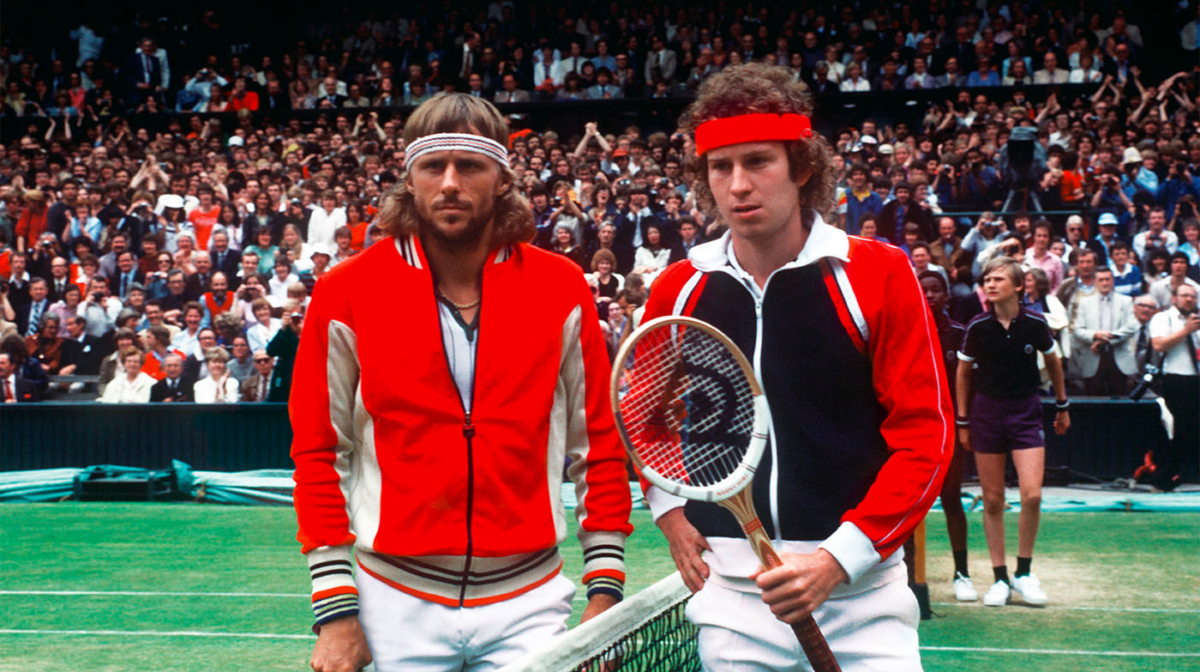
It was the warmest summer of the 20th century when Björn Borg would walk out to compete at Wimbledon for the first time as a professional tennis player. By that point, a 20-year-old Borg had already scooped the French Open twice and he duly raced to the final of Wimbledon without losing a set. In the final Borg would face Ilie Nastase, a tricky Romanian who just two years earlier had been named the world’s number one tennis player for the second consecutive year. The experienced Nastase quickly raced ahead with a three game lead before Borg finally found his rhythm in the game, pulling the game back to 3-3 in games before eventually taking the first set 6-4. Towards the end of the match, Tim Pearson recounts the moment when, finding Borg at the net, a frustrated Nastase thumped the ball at Borg in a burst of anger as he began to feel the championship slipping away to the new protégé. “Borg barely flinched as it flew past his ear, and out; he stared at Nastase, who had turned towards the baseline… ‘What the bloody hell you looking at?’ Nastase growled… Borg turned and walked back to his baseline. He’d made his point, in a small but telling display, not of machismo but of a quiet, contained manliness”, as Pearson recalls.
This is just one example that captures the icy cool of Björn Borg which earned him his nickname in the English press as the Iceberg. A colossal figure who loomed over tennis and radically changed the face of the sport in the late ‘70s, Borg refused to rise to Nastase’s rage. Instead, he calmly completed what would become a routine victory for Borg, dispatching the Romanian in straight sets (6-4, 6-2, 9-7).

Borg was a man of firsts, a trend setter as well as a record breaker: he was the first man to reach six consecutive Wimbledon finals (winning five); the first man to reach four consecutive French Open finals; the first man to win Wimbledon and the French Open in the same year more than once—no mean feat considering the dramatic difference between grass and clay courts, and one that hasn't been matched until this day. At his career peak, Borg went for five consecutive seasons with a winning percentage of 90%. But while the sports world was in awe of this incredible Swedish phenomenon, unable to believe that anything other than a robot could perform which such consistent devastation, Borg would always remain the coolest man within a hundred mile radius of the court. While Borg’s successor, John McEnroe, would be remembered as much for his bursts of verbal vitriol as his huge talent, Borg garnered a reputation as the gentleman of tennis with the impervious front. He would have no trouble dozing in airport lounges or court changing rooms, requiring 9-10 hours of sleep every night to recharge his nervous cells. Following a defeat to McEnroe in his final game in the 1981 US Open final, Borg would nonchalantly walk straight from the court to his waiting car which took him to the airport in his tennis gear before jetting off home where he would announce his premature retirement from the sport.

7 of Wimbledon’s Most Fashionable Moments
We would argue that Wimbledon is the most stylish sporting event ever – and we’ve got the evidence to prove it. Read on to discover our favourite Wimbledon style moments so far, and why it deserves to be crowned the most fashionable event you’ll attend this summer…
In retrospect, Borg’s nickname appears rather ironic; the cool facade of the Iceberg was melted away both by Borg’s talent and the heat of the pressure from the sporting world. While he played with a slow, controlled grace, Borg's spectacular and transient career seems closer to a shooting star than an iceberg. By the age of 25, Borg had retired from tennis with no less than 11 Grand Slams, three year-end championships and 15 Grand Prix Super Series titles, all achieved in just eight supersonic years. While contemporary tennis players such as Roger Federer and Rafael Nadal came of age once they reached the age of 26, tennis fans can only mourn the dearth of what might have been for Björn Borg, and indeed tennis at large, if he was able to continue playing in his late 20s. John McEnroe, who displayed an enormous amount of talent in snatching Wimbledon and French Open titles from the steely grasp of Borg in the early 80s, never truly reached the echelons offered by his early potential. McEnroe would later lament Borg’s early retirement, claiming that he remained ‘in a kind of continued mourning for Borg’ after he left the game.
https://www.youtube.com/watch?v=Yf0yfEfvMHE
Great champions elevate the quality of their sport, something Borg was able to achieve in less than a decade of playing tennis. The Wimbledon final of 1980 played out between Borg and McEnroe has gone down in tennis history as one of the sport’s greatest ever finals, and serves to remind us of the greatness of Björn Borg. The game was partly made famous for its 20-minute long, 34-point tiebreaker in the fourth set which McEnroe eventually edged 18-16. Despite the gruelling intensity of the tiebreaker, rather than giving into the occasion or becoming emotionally fatigued, Björn Borg simply walked calmly back to his bassline, took the fifth set and reclaimed his Wimbledon crown for the fifth consecutive year.









